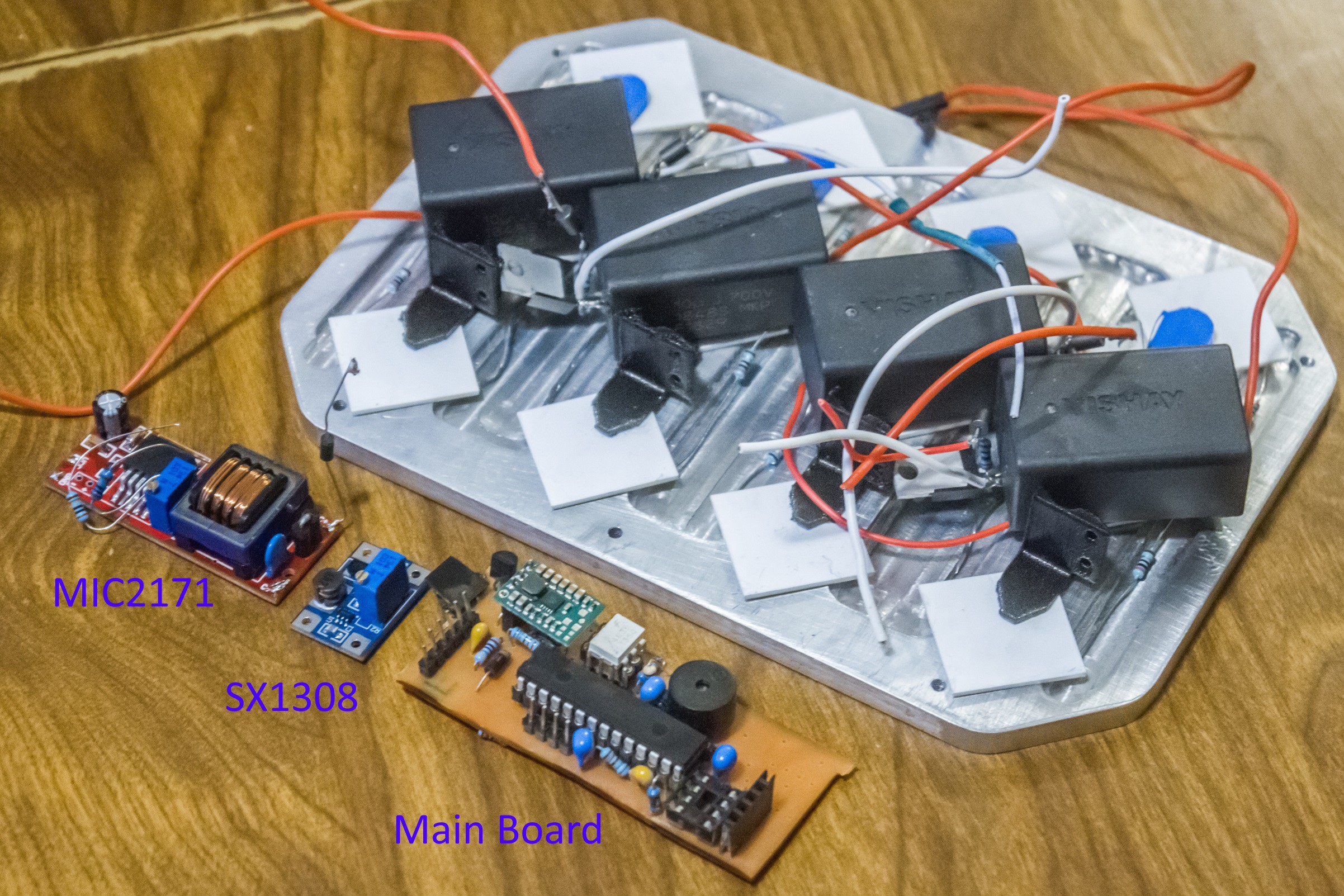It's been some time since I posted about the continuing development of the Mark 2. Progress has slowed recently as I've been distracted by a back injury, meanwhile my work and family have taken some priority over the project. Here's a summary of the Mark 2 progress thus far:
Electronics
The LED circuits have not changed at all. The control board, however, has undergone a complete redesign. One of the main goals was the ability to run on 4x AA batteries (3.2 - 6.0 Volts). Realization requires three switching power converters (I purchased complete converter boards in order to save development time):
- 3.3v converter for the control board (Pololu S7V8F3)
- 15v converter for the gate driver (SX1308 Boost, purchased from eBay)
- 125v capacitor charger (MIC2171 Flyback, purchased from eBay)
This many converters may seem like overkill, but having three separate power supplies has benefits. First off, the microcontroller's supply is completely separated from the gate driver (no fluctuations from the gate driver can affect the microcontroller, unlike that one time it happened and I ruined all the LED's). Second, maintaining 15v for the gate driver means the transistors will perform the same regardless of battery voltage level. Finally, each converter is tailored to serve its function. The power consumption has been significantly reduced compared to the Classic model.
Case Design
The mantra during development of the Classic design was to make it easy to produce a working unit. For the Mark 2, I'm focusing on improving the market value of the unit. The case is partially constructed of metal. The front of the case is made of 1/4" 6061 Aluminum, which will give the unit much better structural and thermal properties. The back portion will still be 3D printed, but I intend to use ABS and post-process it with a vapour bath. The size of the unit has been decreased in every dimension, thanks to smaller electronic components and fewer batteries.

The rear half is being printed as I type. The front half was fabricated using a 3D printed template for the holes and valleys. If I build any more units, the front halves will likely be CNC machined.
So, why am I giving any consideration to the case's thermal properties? Because of the plan to include...
Constant Light Mode
Edgerton has easily 150W of LED lighting power, and it's a bit of a shame that the Classic does not have any way to turn them on for constant lighting. There are two reasons that constant lighting would be helpful: modelling light (which gives a preview of how the lighting is set up and lets the user test different lighting angles in real-time) and image/video lighting.
Because of the huge amounts of lighting power available and the limitations of AA batteries, I'm still contemplating how to design the power supply system. An external supply is definitely needed to produce more than a few watts of power, and I may develop an external pack which can be plugged in to mains power. Providing 150W of power will allow for high shutter speeds, but will only be usable for a few seconds at a time due to the heat generated. 20W - 50W will probably be more sustainable for longer periods of time.
A set of fully-charged batteries could probably supply 10W of power, which can easily be converted to the LED's forward voltage. This may be enough to serve as a modelling light, so that the user doesn't need to plug in an external power supply just to setup the flash.
Unfortunately each of these components is going to add cost and complexity to the unit. Edgerton's primary purpose is high-speed flash photography, and I don't plan to compromise that ability just to add continuous lighting. It's likely that I can add the battery-powered continuous lighting function without much cost, but the mains-powered function may or may not make it into the final design.
 Tyler Gerritsen
Tyler Gerritsen
Discussions
Become a Hackaday.io Member
Create an account to leave a comment. Already have an account? Log In.